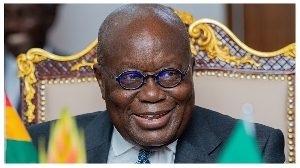During the presidency of former President John Dramani Mahama, the government, through parliament, introduced the Energy Sector Levy Act (ESLA) in 2015 to consolidate existing energy sector levies, promote prudent and efficient utilization of the proceeds generated from the levies, impose a price stabilization and recoveries levy, facilitate sustainable long-term investments in the energy sector, and provide for related matters.
The NDC government established ESLA to consolidate levies collected under the sector, provide funding for power generation and the clearance of legacy debts accumulated within the sector, support road maintenance, provide funding for the regulation, management, development, and utilisation of sustainable energy resources under the Energy Commission, provide funding for investments in public lighting and the National Electrification Programme, and subsidise Premix and Residual Fuel Oil.
This was after solving the generational problems with two major plants in the peak of the power crises. In summary, H.E. John Mahama established ESLA to stabilise Ghana's energy sector, mitigate the impact of the crises, and prevent the reoccurrence of any energy crises in the future.
The levy, which applied to petroleum products and electricity consumption, was intended to raise funds to settle all outstanding energy-related debts amounting to GH¢14 billion by the close of 2020.
Former President John Dramani Mahama has recently disclosed that he advised President Akufo-Addo against meddling with the ESLA funds upon assuming office, warning that any diversion from its intended purpose could revive 'dumsor'.
President Akufo-Addo did not heed this advice; instead, the Akufo-Addo government collateralized the ESLA fund for a loan and extended the levy until 2035, hence the current power crisis in the country.
The Public Utilities Regulatory Commission's validation reports on the Cash Waterfall Mechanism (CWM) have revealed that the Finance Ministry owes some power generators about GH₵1.28 billion, as Ghana continues to grapple with erratic power supply.
Clearly, this confirms the former president's position that President Akufo-Addo's refusal to heed his advice has rendered the ESLA bankrupt without funds to serve its intended purpose.
It is important to note that over the course of four years, ESLA generated GH₵30 billion until the government decided to collateralize it, and here we are facing an energy crisis because the government cannot pay GH₵1.28 billion.
H.E. Mahama is right to attribute the recent energy crises to Akufo-Addo's intransigent refusal to heed his advice not to touch the ESLA funds.
It is therefore fair to criticise President Akufo-Addo for the current power crises plaguing many parts of the country due to his intransigence and refusal to heed the advice of former President John Mahama.
After investing heavily to augment the generational capacity by procuring the AMERI power plant and Karpowership plant, H.E. John Dramani Mahama introduced ESLA as a special-purpose vehicle to address any unforeseen financial challenges that may arise; however, the intransigence and incompetence of the Akufo-Addo administration have compelled the president to collateralize the ESLA funds for loans.
ESLA is a Special Purpose Vehicle (SPV) incorporated as a public limited liability company to issue long-term bonds to resolve energy sector debts due to banks and trade creditors.
The securities issued are backed by a component of the Energy Sector Levy Act (ESLA) receivables, which have been assigned to the company for the settlement of coupons and principal repayments arising under the securities that are issued.
The current power crises are a result of the mismanagement of the Akufo-Addo administration; they are self-inflicted and unacceptable.
Opinions of Wednesday, 1 May 2024
Columnist: Awudu Razak Jehoney







![NPP Flagbearer, Dr. Mahamudu Bawumia [L] and NDC Flagbearer John Mahama NPP Flagbearer, Dr. Mahamudu Bawumia [L] and NDC Flagbearer John Mahama](https://cdn.ghanaweb.com/imagelib/pics/869/86902869.295.jpg)











